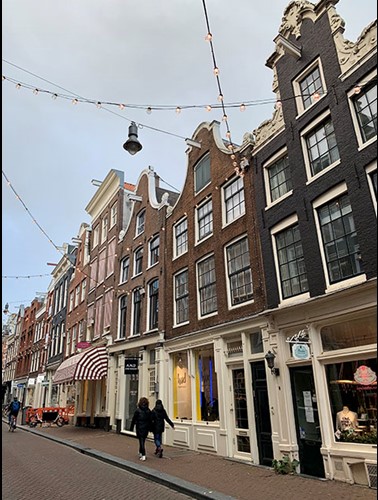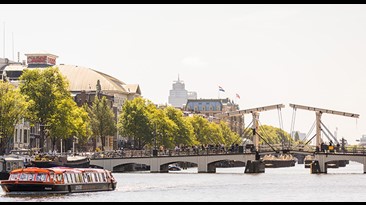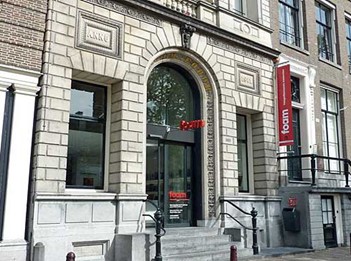
Discover the sights of the Keizersgracht
2 November 2021
At the start of the 17th century, the city of Amsterdam started the process of digging out its three grandest canals, the Herengracht, Keizersgracht and Prinsengracht, which together form the UNESCO World Heritage listed Canal Belt. The Keizersgracht, or Emperor’s Canal, was named after Emperor Maximilian of Austria, and is the widest canal in the centre of Amsterdam. Like the Prinsengracht, the Keizersgracht is crossed by 14 bridges but it offers its own unique sights to discover.
9 Streets
The Keizersgracht runs through the heart of the 9 Streets (9 Straatjes), a part of the Jordaan neighbourhood consisting of picturesque streets which connect the different canals and are filled with unique boutiques, stylish cafés and galleries. The area, tucked away behind the Royal Palace on Dam Square, is popular with shoppers hunting for speciality products and unique gifts.
De 9 Streets is the ideal neighbourhood to get to know Amsterdam in all its variety and richness. The area offers a great overview of the architectural styles in the city. From the very beginning these 9 little cross streets were dominated by trade and culture. And it continues to be a lively neighbourhood after 400 years.
Gay monument
The Gay monument (Homomonument) in Amsterdam was the first of its kind in the world. The monument commemorates all gay men and women who were killed during World War II, and all LGBTI people who have been or still are being persecuted by government regimes. Almost immediately after the war there were calls to establish a memorial but it truly gained traction in the 1980s. In September 1987, the monument was officially unveiled.
The Gay monument consists of three pink granite triangles on the bank of the Keizersgracht canal in the centre of Amsterdam, together they form a larger. The three points of the triangle are symbolic: one corner points towards the National War Memorial on Dam Square; another points across the canal to the site of the Anne Frank House; while the third corner points towards COC Amsterdam. It remains the largest monument in the world dedicated to homosexuality and remembrance.
Skinny bridge
Possibly the best known and most photographed bridge in Amsterdam can be found at the end of the Keizersgracht, where the bridge crosses the Amstel river. The Skinny Bridge (Magere Brug) is meant for pedestrians and cyclists only. It was once so narrow that it was hard for two pedestrians to pass each other, hence the name.
The bridge is considered as one of the most romantic bridges in Amsterdam, especially at night when thousands of lights illuminate it. A local legend even claims that a kiss between lovers while on or passing under this bridge will ensure that they will be in love forever.
Church of Our Lady
Also known as the Syrian orthodox church, the Church of Our Lady (Onze Lieve Vrouwekerk) was designed by Theo Molkenboer, the leading architect for Catholic churches in the Netherlands in mid-19th century. It was the first church he ever designed based on the principles of classical gothic construction.
The Roman Catholic community was the original community served by this church when it was built between 1852 and 1854, shortly after the ban on the building of Roman Catholic churches was lifted. As the numbers of Roman Catholics in Amsterdam dwindled, the church was sold to the Syrian Orthodox Catholic community, who allow other denominations to use the church as well, including the Surinam Roman Catholic community and the general Roman Catholic community.
Foam
Near the southern end of the Keizersgracht, you can visit Foam, an internationally renowned photography museum located in a 18th-century canal house with an airy atrium. The museum displays all facets of contemporary photography from both world-famous photographers and up-and-coming talent in everchanging exhibitions.
Foam shows a wide variety of genres ranging from historical pictures and art photography to street photography and fashion photography. Famous names that had an exhibition in Foam in the past include Helmut Newton, William Klein, Ai Weiwei and André Kertész. Foam also acts as a creative hub where photographers can meet and participate in forums and symposiums.
Museum van Loon
On the opposite side of the canal from Foam stands Museum van Loon, former home of the regent Van Loon family. The museum was once a private residence, its first resident was painter Ferdinand Bol, a student of Rembrandt. The last residents of the house were the Van Loon family, who bought the house in 1884. Two centuries earlier during the Dutch Golden Age the family‘s ancestor, Willem van Loon was a founding member of the VOC, the Dutch East India Company.
The interior of the house has remained largely intact during the last centuries and still evokes the splendour of the 17th century. Inside the rooms a large collection of paintings, fine furniture, precious silvery and porcelain from different centuries is on display. Behind the house lays a beautiful garden, an oasis of quiet in the modern inner city.


